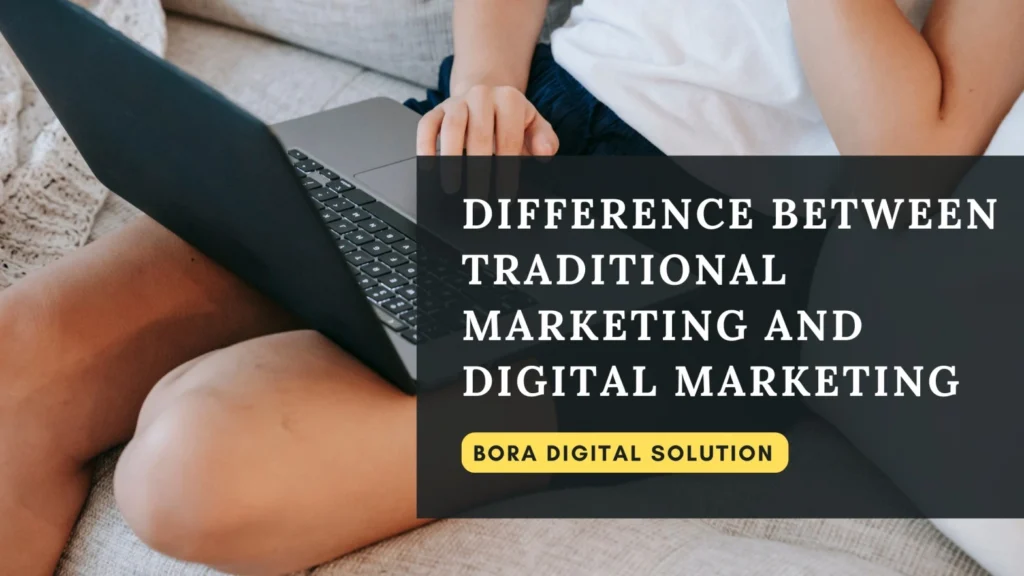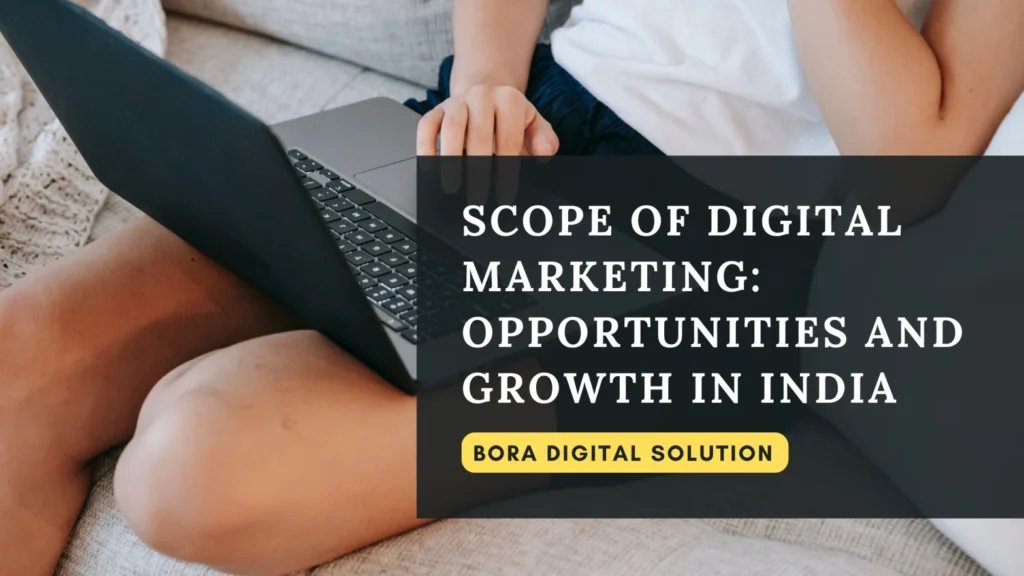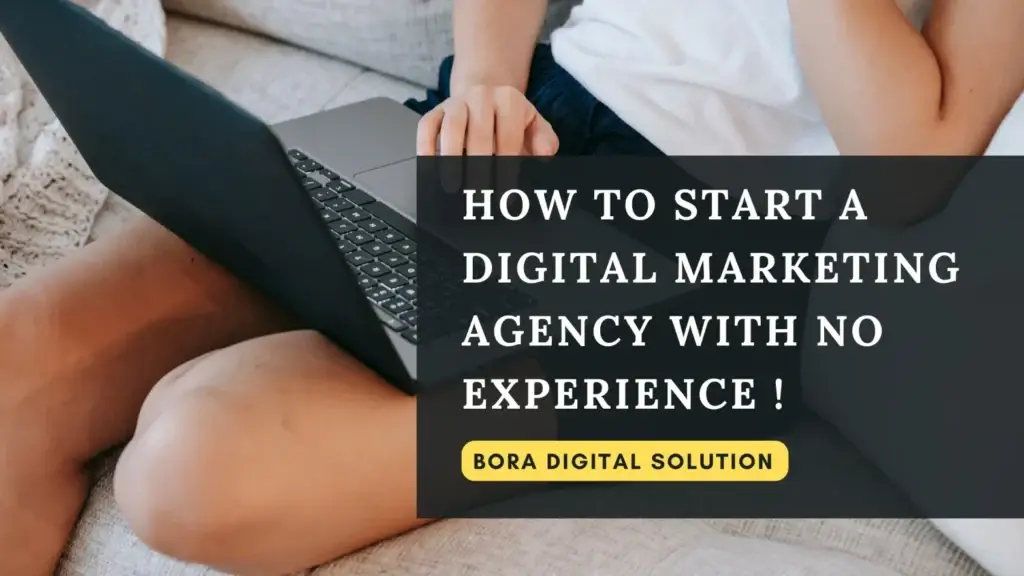Difference Between Traditional Marketing And Digital Marketing !
The difference between traditional marketing and digital marketing is something you’ve probably experienced without even realizing it—like when an ad for something you just searched for shows up on your social media feed, or when a familiar brand’s ad catches your eye in a magazine.
In today’s fast-paced business world, these two marketing approaches offer very different paths, each with unique strengths. So, how do you decide which one is the right fit for your business?
Let’s break down the core distinctions.
What is Traditional Marketing?
Think of traditional marketing as any form of offline advertising. This is the world of television commercials, radio spots, print ads in magazines and newspapers, and physical billboards. This approach was the foundation of all advertising for decades, reaching a broad audience with a one-way message. While it offers a tangible experience and can build a strong local presence.
It often comes with higher upfront costs and is notoriously difficult to measure with precision. If a business places an ad in a magazine, they can’t know for sure how many people saw it or if it led to a sale.
The Rise of Digital Marketing
Key Channels in Digital Marketing
In contrast, digital marketing uses the internet and electronic devices to connect with consumers. This covers a wide range of channels, from search engines and social media to email campaigns and mobile apps. Unlike its traditional counterpart, digital marketing is all about two-way communication and precise targeting.
Advantages of Digital Marketing Over Traditional Methods
You can target specific demographics, interests, and online behaviors, ensuring your message reaches the right person at the right time. This approach is often more affordable to start and provides real-time analytics, allowing you to track performance and measure your return on investment (ROI) with remarkable accuracy. For a business on a budget, this level of control and measurability is a game-changer.
Read this also: Scope of Digital Marketing.
The Power of a Blended Approach
Why Blending Digital and Traditional Marketing Works
While the advantages of digital marketing are clear, the most successful campaigns today don’t choose one over the other. Instead, they strategically blend both.
Case Study: Coca-Cola’s “Share a Coke” Campaign
Consider the “Share a Coke” campaign from Coca-Cola. It was a classic idea to have actual bottles with names on them. Traditional marketing concept, creating a tangible, personal experience. However, the campaign’s explosion into a global phenomenon was driven by social media, where people shared photos of their bottles, generating a wave of user-generated content and online buzz. This is a perfect example of a traditional idea designed for digital amplification.
Case Study: Old Spice’s “The Man Your Man Could Smell Like” Campaign
Another great case study is the Old Spice “The Man Your Man Could Smell Like” campaign. The campaign’s humor was first broadcast through television commercials—a classic traditional channel. Its success was then cemented by an interactive digital component that included personalized video responses to social media followers.
The Path Forward
Combining Traditional and Digital Marketing for Success
The future of marketing is not about choosing between these two disciplines; it is about understanding their unique strengths and orchestrating them into one unified strategy.
Strategic Partnerships for Lasting Impact
Navigating this complex landscape requires a partner with a nuanced understanding of both worlds.
A firm like Bora Digital Solution understands that true success comes from a blended approach that leverages the data-driven precision of digital marketing with the broad, lasting impact of traditional campaigns.
Read this also: SEO Services in Indirapuram
Frequently Asked Questions
When I first began studying marketing, I saw how old-school marketing used offline channels so much—TV commercials, radio spots, and newspaper full-page ads. They are great at building overall awareness, but the message is often one-directional.
With digital marketing, the experience feels more intimate. Whether it’s social media or email marketing, companies can really converse with their audience, respond to inquiries, and form relationships rather than simply broadcasting a message.
From personal experience, yes. Digital marketing is so much more budget-friendly. A small business can place an ad campaign on Facebook with a few hundred rupees and still target the right audience.
Think about that compared to a TV advert or a billboard—where you pay a lot of money before even knowing if it would pay off. Digital marketing allows you to test, experiment, and expand without emptying your wallet.
That’s where digital marketing truly excels. I adore the fact that you can watch live numbers—Who clicked, who signed up, who purchased something.
Each step is measurable, so you always have your ROI. Traditional marketing, however, is sort of a guessing game. Okay, fine, surveys and sales figures give you a sense of it, but it’s never quite as accurate.
- Over time, I’ve seen businesses rely on a mix of digital channels:
- Search Engine Optimization (SEO) to appear on Google when people search.
- Content marketing like blogs, videos, and infographics to educate or entertain.
- Social media marketing for engagement and brand building.
- Email marketing to nurture leads and keep customers updated.
- Pay-Per-Click (PPC) advertising for quick, targeted results.
I’d say yes, without a doubt. I’ve seen local businesses still get great results from newspaper ads or radio spots. Not everyone spends hours online, so traditional methods still help reach those audiences. In fact, the smartest campaigns I’ve come across usually blend both—digital for precision and traditional for mass appeal.
Let’s be real—no one likes to read something that sounds like it was crafted by a bot. When a blog post feels like it’s being written conversationally, perhaps even with a personal anecdote, readers relate.
I’ve found that when I write about my own experience, people react better. And most importantly, it fits very well with Google’s E-E-A-T recommendation (Expertise, Experience, Authoritativeness, Trust), which gives credit for content that feels real.
- Here’s what I typically have in mind:
- Insert keywords naturally into the meta title, meta description, and H1 header.
- Break up content into concise subheadings so that it’s scannable.
- Employ bullet points or lists for clarity.
- Insert images with alt text to make content more engaging and search-friendly.



